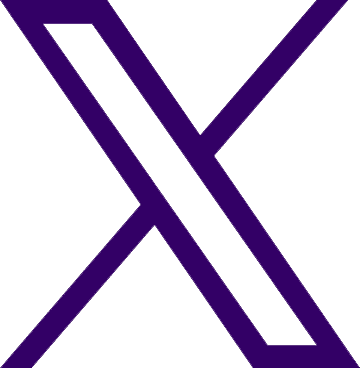NIH-Funded Cancer Drug Delivery Platform Continues Through Clinical Trials

By Erin Frick
ALBANY, N.Y. (March 27, 2025) — For over a decade, University at Albany chemist Max Royzen has been collaborating with San Francisco-based biotech company Shasqi to develop an innovative drug delivery platform that aims to improve targeted cancer treatment while reducing harmful side effects. Called “Click Activated Protodrugs Against Cancer” (CAPAC), the platform uses “click” chemistry to deliver and activate anti-cancer drugs at the tumor site, without damaging healthy tissues along the way.
So far, the platform has primarily focused on treating various forms of sarcoma — a type of cancer that forms on the surface of organs and blood vessels and cannot be removed surgically, leaving chemotherapy and radiation as the leading treatment options. Going forward, the focus will be on non-small cell lung cancer and gastric cancer, among others.
“Systemic cancer treatments can be very effective at minimizing or eliminating tumors in the human body, yet they also commonly cause side effects that harm healthy tissues, limiting the amount of drug that can be given,” said Royzen, an associate professor in the Department of Chemistry and the RNA Institute. “Our platform is designed to target tumors without causing other biological reactions in the body. We hope this approach could someday open new avenues for cancer treatment.”
Royzen began developing the technology underpinning the CAPAC platform during his postdoctoral research. Since joining UAlbany, he has continued to advance the work and connected with Shasqi in 2013 with support from the Office of Technology Transfer.
Targeting cancer with ‘click’ chemistry
The key innovation behind the CAPAC platform is a specialized chemical reaction called click chemistry, which occurs only when two specific, non-biological molecules come together. This approach allows the anti-cancer drug to be selectively activated at the tumor site, minimizing adverse effects in the rest of the body.
"Our platform uses two functional groups that are not naturally found in the human body, which react only when they come together at the tumor site,” Royzen said. “Because the functional groups are not a natural part of living organisms, they don’t interact with any other systems. Unlike many forms of chemotherapy that affect healthy tissues and systems in addition to the cancer, this approach primarily effects the tumor site where it is activated."
The process begins with localizing one of the click chemistry components at the tumor, which acts as the target for the drug. This is achieved through one of two ways.
The first method involves injecting a jelly-like biopolymer containing one of the click chemistry components at the tumor site. This substance acts as a “sponge” to attract the drug to the tumor location. The second method, administered intravenously, infuses a “binder” medium — usually an antibody fragment attached to the click chemistry component — into the patient’s bloodstream. The antibody fragment is drawn to the tumor, directing the click component to bind at that site.
A few hours after the drug target (either the biopolymer or antibody fragment) is delivered, an inactivated cancer drug is administered intravenously. Upon reaching its target, the drug “clicks” at the tumor site and becomes activated.
This two-step approach offers several advantages over traditional targeted cancer drug approaches. For one, it minimizes toxicity to normal cells, enabling more of the drug to be administered safely. And, by enabling larger doses, this increases the likelihood of successfully killing the cancer cells.
Clinical trials
Clinical trials of the CAPAC platform — which are being conducted by the Shasqi team in California — began in 2020. Phase one and phase two trials using the biopolymer are now complete, with the most recent concluding in 2023. These studies provided clinical evidence that the click chemistry reaction worked inside the human body — the first time that had even been done. A manuscript describing this work was recently accepted by Clinical Cancer Research, the journal of the American Association for Cancer Research.
Testing is now focused on the version of the platform that localizes the drug target intravenously. If successful, this approach could expand the types of cancers that the platform could potentially treat, while making the process easier on patients.
“While the initial focus has been on the biopolymer approach, we have most recently pivoted to using an approach similar to antibody-drug conjugates (ADCs), wherein the click chemistry component is localized at the tumor using an antibody fragment,” said Dr. José Mejía Oneto, CEO and founder of Shasqi. “This eliminates the need for an injection at the tumor site, as the drug target can be given intravenously, thus expanding the number of cancers that can be reached. (Not every tumor is suitable for direct injection.) This also makes treatment more convenient for patients.”
Shasqi is generating encouraging lab and animal data using this approach, with plans to complete preclinical studies this year and begin clinical trials in 2026.
Translating from basic research to the clinic
“We have been working with Max and the Royzen Lab for more than a decade, and the collaboration has been pivotal to the success of Shasqi,” said Oneto. “The deep expertise that Max and his lab bring to the development of our CAPAC platform has enabled us to develop novel drugs that can be activated specifically at tumor cells through click chemistry.”
“It is really quite rare for scientists working in academia to see their research used in a clinical setting,” Royzen said. “I am grateful for the opportunity to work with collaborators at Shasqi to transition findings from my lab into a platform that is being tested in clinical trials.”
Research on the CAPAC platform is currently supported by a phase II Small Business Innovation Research (SBIR) grant, awarded by the National Center for Advancing Translational Sciences, part of the National Institutes of Health (NIH).




